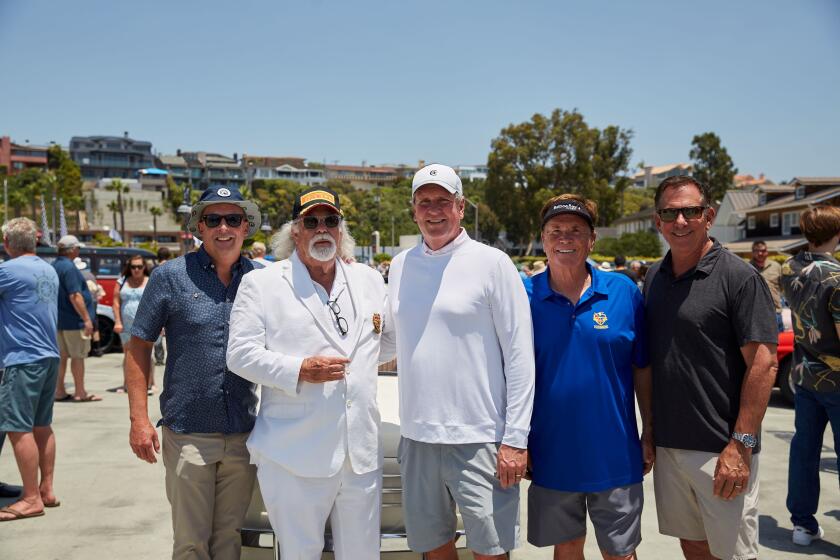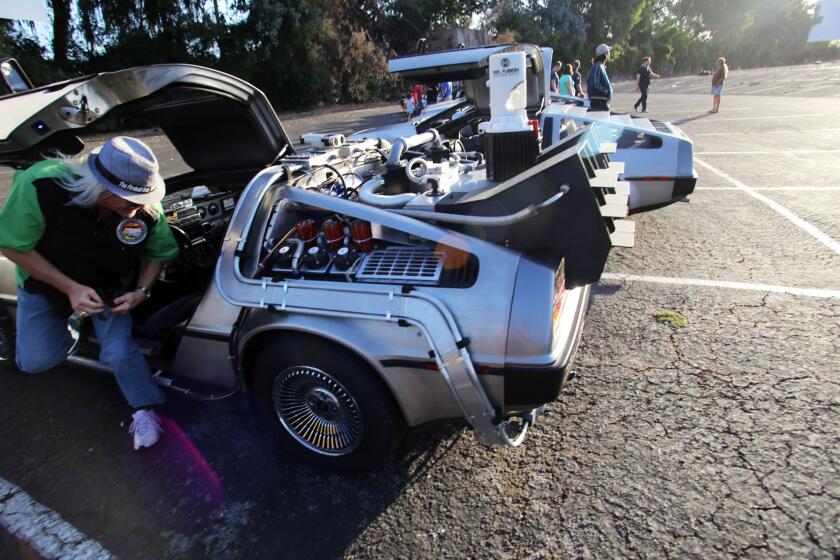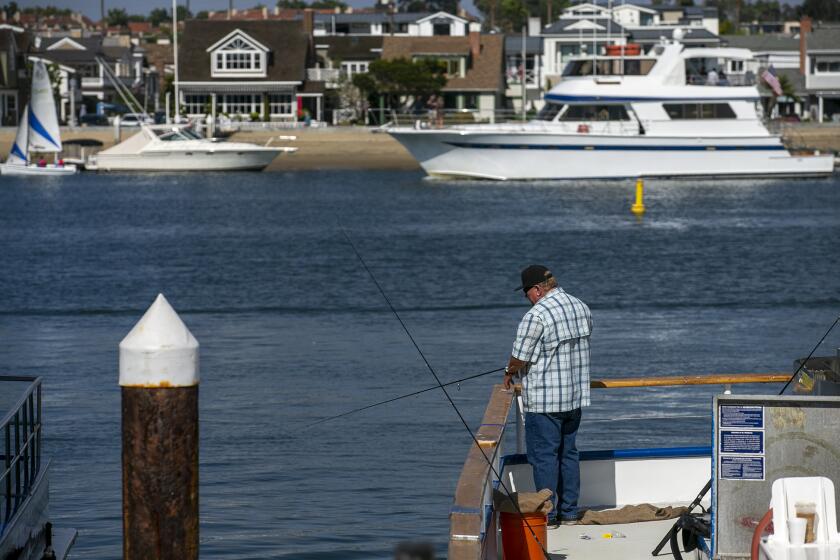Hansen: Live and let live-work
You know it by the cow rugs.
It’s that dusty field on Laguna Canyon Road that turns into a little swap meet on the weekends.
But if artist Louis Longi gets his way, it will become a 30-unit, live-work complex where artists can do what they do — without the burden of exorbitant Laguna Beach rents.
The problem is that the proposed project has its opponents. A few neighbors have complained about potential traffic and the building’s size and compatibility with the surrounding environment. Basically, they want to keep it rural.
At a recent hearing before the Planning Commission, the issue was facing a split vote, so it will be reheard in November. In the meantime, Longi can only shake his head and try to work the system: abide by the rules, assuage fears and hope that residents value the goal.
“This is going to be everything for the artist,” Longi said, trusting that the city backs up its claim to support the live-work concept.
That trust, however, comes with a big asterisk of doubt.
For starters, every other city in the world refers to this as a live-work zoning issue, recognizing that artists live where they work.
In Laguna Beach, however, the name of the ordinance was specifically changed last year to work-live, emphasizing that work comes first.
It’s a subtle change that speaks volumes about how disconnected Laguna Beach can be to reality.
“Clarification is made that the work component of the unit takes precedence over the ancillary residence component,” the ordinance says.
Where exactly is the line between art and life?
If I am an artist who wants to have a dinner party, do I tell friends to enter through the back door titled “ancillary residence component”?
Similarly for Longi, this seven-year project has been filled with bureaucracy and incredible make-work.
“Why do they have to make it so hard?” he asked, hoping for an answer.
He recalled with wry amusement how he was told he needed to hire a traffic consultant, and so he did. But Longi, a 16-year resident, knew Laguna Canyon traffic better than the expert.
When the consultant started running the numbers, they did not fit into the formula. Commute time: zero. Number of cars: inconsequential.
In order to make the traffic models work, the expert finally started adding trips to the grocery store.
This lack of appreciation for the live-work model is disconcerting. There is a serious concern among artists in Laguna that if this particular live-work project does not get approved, nothing will because it fits all the requirements.
A refusal would mark, in many ways, the end of the fabled “artist colony” reputation of Laguna Beach. Many artists say it’s already gone.
For example, the city requires Sawdust Festival artists to live in Laguna Beach, but very few can afford to live here. It’s a dirty little secret that the provision is either violated or favors aging artists through grandfather clauses.
Next time you are at the Sawdust, try to find an artist under the age of 30. If you do, ask about his or her living arrangement. I have.
The results are always the same: They rent a spare room on the side or a 600-square-foot studio or they politely decline to say.
Longi wants to start rents at about $800 a month, a steal in Laguna since it would include the working space. He said he’s not doing this as a developer. He’s doing it as a working artist trying to give back.
“We’re not going to make money on this,” he said. “We’re doing it for the love of the artist.”
Imagine that.
Imagine for a second that the artistic spirit of Laguna Beach is alive and not beaten down by narrow interests.
People like to talk about retaining the village of Laguna, but there is nothing nostalgic about fake cow rugs and rusted cars. Laguna Canyon does not need to continue resembling some “Breaking Bad” set.
It’s OK to change.
It’s OK to let the real artists paint the town again.
DAVID HANSEN is a writer and Laguna Beach resident. He can be reached at davidhansen@yahoo.com.
All the latest on Orange County from Orange County.
Get our free TimesOC newsletter.
You may occasionally receive promotional content from the Daily Pilot.



